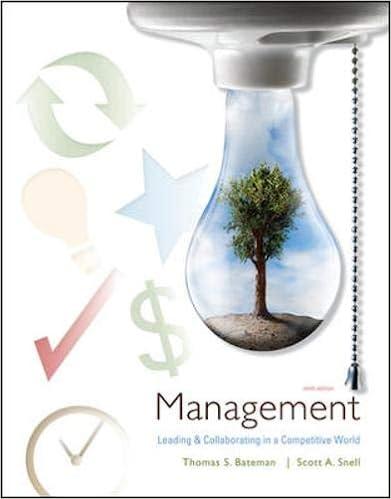Honda introduced the worlds first gasolineelectric hybrid car, the Insight, in 1999. It discontinued the three-door hatchback
Question:
Honda introduced the world’s first gasoline–electric hybrid car, the Insight, in 1999. It discontinued the three-door hatchback in 2006, only to reintroduce it in 2009 as a second-generation, fivedoor hatchback. Priced at $19,800, the 2010 Insight was the least-expensive hybrid available. Honda also markets hybrid versions of its Civic and Accord, but to date, its hybrid sales have not been as strong as those of the Toyota Prius, which outsells Honda hybrids 4 to 1. Nevertheless, Honda doesn’t seem overly concerned. That may be because Honda doesn’t regard the lithium-ion battery technology—which powers the Prius—as the wave of the future. Honda cites significant weaknesses in that technology, such as a tendency to overheat and take too long to charge. What is superior to the lithium-ion battery, the company believes, is hydrogen fuel-cell technology. In 2009 the company introduced the FCX Clarity, a four-passenger sedan whose motor runs on electricity generated by a hydrogen fuel cell. Although the Clarity is currently available for lease only in areas where hydrogen fuel-pump stations exist, Honda expresses confidence that the infrastructure will catch up. Twice as efficient as a hybrid and three times more efficient than a gas-powered vehicle, the Clarity’s only emission is water, a by-product of the hydrogen fuel cell. While hybrid models powered by lithium-ion batteries take hours to charge, Honda’s Clarity charges in a minute. What’s more, the company claims, within 10 years Clarity owners will be able to charge their cars at home. Environmental experts named the Clarity the 2009 World Green Car. On the horizon for Honda is an array of affordable electric hybrids, including a hybrid version of its subcompact Honda Fit as well as the redesigned Insight. Company management expects hybrids to account for 10 percent of its sales by 2012. Honda acknowledges that gasoline will likely continue to be the most frequently used fuel for the near term, but its engineers are working to identify additional alternatives. Current projects include the development of a next-generation clean diesel engine and the production of ethanol from cellulosic biomaterials, not corn.
• What can Honda president and CEO Takanobu Ito do to make Honda hybrid models more appealing during an economic downturn?
• In 2008, Honda discontinued its sponsorship of Formula One racing. The move is expected to save the company about $500 million a year. In your opinion, should Ito reevaluate this decision made by his predecessor? Why?
Step by Step Answer:

Management Leading And Collaborating In The Competitive World
ISBN: 9780078137242
9th Edition
Authors: Thomas Bateman, Scott Snell





